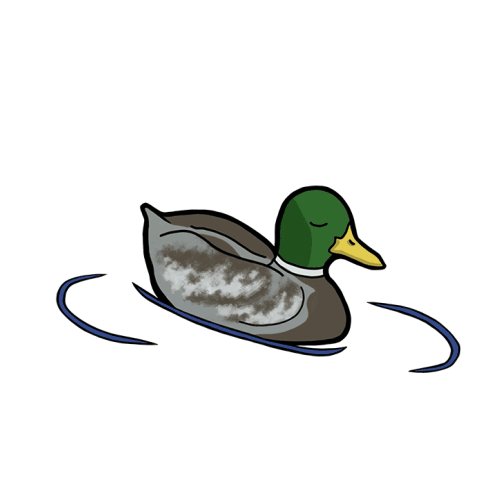Landreman, Wood host webinar exploring what it means to be an anti-racist ally
- Collegian staff
- Apr 5, 2021
- 4 min read
Updated: Oct 22, 2021
Piper Lehr
Staff writer
On Mar. 31, VP of Student Affairs Lisa Landreman and University Chaplain Karen Wood hosted a webinar entitled “Exploring what it means to be a white ally against racism.” There were a mix of attendees, including students, professors and staff. During the initial framing of the discussion, Landreman stated that their goals were to talk about, “anti-racism work, and understanding some of the concepts about that, and hopefully to learn some strategies for cultivating new habits towards becoming an anti-racism ally.” She acknowledged that the hour-long webinar wouldn’t be enough to cover the full scope of the topic: “Our hope is that perhaps we’re just starting to lay the foundation for what can be ongoing conversations,” she said. Wood then defined what they mean by race, using a social construct theory lens: “What we’re going to be talking about today is primarily around identity around race, around whiteness,” she said. Wood also recognized that intersectionality plays a role in the ways in which we experience whiteness. Landreman chimed in, elaborating: “my experience as being a white, cisgendered, able-bodied female is going to be different than a white person who has different identities from that.”
Here were the major takeaways of the event:
Racism is learned, not innate
Landreman said that “we were born into a world without biases and stereotypes” but that we were “quickly socialized” by institutions and culture. These behaviors are then “reinforced by our peer groups in a reward/punishment system.”
White supremacy isn’t just extremist groups
Landreman noted that it’s easy to think of white supremacy as just being the extremist groups that we see in the news, such as the Proud Boys, but that’s a reductive way of thinking about the ideology. She explained: “We’’re referring to a historically-based, institutionally-perpetuated system of exploitation and oppression of continents, nations, peoples of color by white peoples for the purpose of maintaining and defending a system of wealth, power, and privilege.”
White Privilege
Wood also defined white privilege during the discussion: “it just means unearned access to resources and social power readily available only to some people based on their advanced social group membership, in this case, membership as white people” and Landreman stepped in to mention that it’s easy to think of white privilege as just being “economic privilege,” but that’s not all that it encomapsess. “Privilege comes from social capital, from social power and those norms,” she said. Wood mentioned that one of the first steps to ally-ship is acknowledging that this privilege exists.
Unintentional Complicity
Landreman asked attendees to acknowledge that as white people, we’ve been raised with white supremacist beliefs wether we’re conscious of it or not. “Our failing to see us as part of that very system also can stop us from being effective white allies,” she said. Wood elaboated: “I sometimes think of that as unintentional complicity-I don’t mean to be complicit, I didn’t set out to be complicit, but by virtue of who I am and how I’ve been socialized, I am complicit unless I am specifically anti-racist.”
Being Anti-Racist
Wood showed this diagram depicting the different zones that one moves through while working to become anti-racist. She noted that the zones aren’t meant to be stagnant, even though they’re depicted that way: “we’re in and out of these zones, hopefully, all the time, and you can be in more than one at once,” she explained.

What is a white ally?
Landreman and Wood closed by attempting to define what an ally is. Landreman explained, “When we think about ally we’re thinking about members of dominant groups who act against oppression towards a vision of social justice.” They also brought up the controversy surrounding the word ally, which largely has to do with the fact that it is often used in performative ways. Wood said, “It’s not a self-proclaimed identity or performance. You hear the phrase “performative ally-ship” a lot; [that means] it’s for the benefit of others but not actually for the benefit of the impacted group.” Landreman elaborated, “It’s a difference between defining, ‘these are ally behaviors, or i’m working to become an ally’ vs saying, ‘I am.’” Wood then offered some synonyms for the word “ally” that perhaps get the point across better: “accomplices, in solidarity with, or quite frankly anti-racist activist, right, say what it is. Co-conspirator, co-resistor or, not very catchy but frankly someone working to end white supremacy.”
Landreman and Wood mentioned that they were interested in hosting a second discussion, which would discuss what makes being a White ally difficult by naming the tensions, as well as listing some skills that we can develop to help overcome these difficulties. As for now, the timing of this is undecided, but they do have an upcoming event on April 15 at 7 p.m. discussing racism between city and state officials. “More details to follow but I’m trying to get the word out now. It’s with the mayor of Salem, Chief of Police, President Thorsett, and others from the city and Willamette community,” said Landreman.
This conversation comes during a time of elevated racial violence. Not only has there been a reported [world-wide increase in anti-Asian hate crimes], but also, an Asian Willamette student was recently assaulted [just blocks from campus]. While it’s great that Willamette is coordinating these events, it should be noted that both panel leaders (Landreman and Wood) were white, and not many POC participated in the panel in general.




Comments